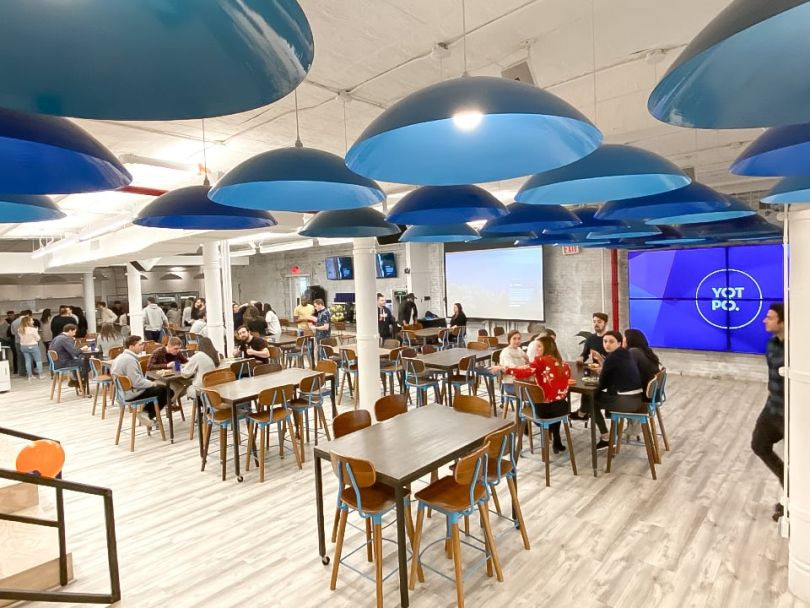COVID-19 has changed how people navigate through the world, likely in ways that are permanent.
In some ways, that’s not necessarily a bad thing. For brands, it’s actually opened up new possibilities in how they reach consumers.
As news of the novel coronavirus swept the globe early last year, shoppers everywhere went into “panic mode,” as Emma Fried, a customer success manager at e-commerce giant Yotpo, described it. That meant consumers weren’t shopping at their usual favorite stores — they were shopping anywhere that was safe and easily accessible. In other words, she said, shoppers were favoring brands that had a robust e-commerce presence. Think retailers on Amazon, not mom-and-pop shops.
What’s the problem with that? Well, as it would stand, e-commerce had been a booming outlet utilized by brands for years — but not all of them. To survive, every brand would have to get its online shopping capabilities in order. Fast. Adding further difficulties, there was still the issue of how companies would regain their once-devoted shoppers.
That’s where Yotpo came in. Fried and Product Manager Lior Haimovich work on Yotpo’s loyalty offerings, which are specifically designed to keep customers returning to their favorite brands. Unfortunately, the pandemic had thrown a wrench in the products they had been building.
“We needed to build incentives for consumers to shop with our brand partners instead of Amazon,” Fried said. “We wanted to strengthen trust for our brands and give shoppers more reasons to support our customers.”
With little room for error, Yotpo got to work in devising new ways to build back loyalty between brands and shoppers. In a conversation with Fried and Haimovich, Built In NYC gained some insight into how the team was able to respond so quickly — and why that quick response was a lifeline to many businesses.
How big is the shift to e-commerce, anyway?
Why is loyalty so important right now for e-commerce brands? How does that play into larger trends you’re seeing?
Product Manager Lior Haimovich: There’s an opportunity for brands to grow right now, and they’re realizing it. The online world has saved a lot of businesses, and as a result, brands are putting more funds into e-commerce. There are new segments and new audiences buying online for the first time — and brands can capitalize on that.
One of the ways to do that is through loyalty. Many brands have email marketing and a reviews solution, but I think we’ll see an increase in loyalty solutions, which give brands the opportunity to turn these new segments of shoppers into loyal, lifelong shoppers. It creates a bond with these customers that are emotional and financial — after all, if you have loyalty points, why would you buy elsewhere?
There’s an opportunity for brands to grow right now, and they’re realizing it.”
Customer Success Manager Emma Fried: For brands to stay afloat, they really need to find ways to generate stickiness with the consumer, which is why loyalty is so important. It actually ties in with a lot of other trends we’re seeing in e-commerce right now. For example, shoppers care about where their products are coming from more than ever — they want their food to be organic and their clothing to be produced ethically. It’s a big concern for shoppers because they want to actually trust the brands they’re buying from. It’s about fostering that trust so shoppers will continue purchasing with certain brands.

What were some of the offerings Yotpo rolled out at the beginning of the pandemic to help boost loyalty?
Haimovich: We were making a lot of adjustments at the beginning of the pandemic, so we had to be agile. Some of our initiatives became less relevant overnight: We had one initiative on our loyalty product line that gave shoppers the ability to buy something from a brick-and-mortar store, scan their receipt and earn loyalty points for that purchase. Obviously, when lockdowns started going into effect, it didn’t make a lot of sense anymore.
We developed an integration with ShoppingGives, which allowed brands to incorporate loyalty campaigns with donation campaigns. Then, shoppers could donate money to causes supporting people suffering from COVID-19 and get loyalty points. Brands and shoppers really loved it.
We were making a lot of adjustments at the beginning of the pandemic, so we had to be agile.”
Fried: Another initiative that we came out with was a paid-membership program, which is a yearly subscription shoppers have with a brand. It played a big role because those consumers would continue shopping with a particular brand for an entire year. This gave brands the ability to get continued payment upfront, and from the shopper’s perspective, they were getting benefits with that brand they shop with. It was a win for both parties. Ultimately, we were bringing immediate revenue to our customers during a time when they weren’t sure what their long-term revenue was going to look like.
Can you share an example of how loyalty programs specifically helped brands during COVID-19?
Fried: I work with a lot of brands across different industries. The feedback I was getting across the board was that certain brands were struggling, but some were actually thriving. A huge issue these thriving brands faced were supply chain issues — they couldn’t keep up with demand. So we worked on syncing loyalty with their marketing initiatives by running what we call a bonus-points campaign.
Let’s say a brand was running a point-for-purchase campaign. We’d run a double-points promotion over the course of a weekend or a month, sometimes associating those campaigns with certain products. I worked with brands to discover what they had inventory of, then drove traffic toward those items, instead of items that were stuck in warehouses their workers couldn’t go into due to COVID.
Supporting loyalty through product tweaks
What role did customer feedback play in these new loyalty initiatives?
Haimovich: At Yotpo, we’re obsessed with our customers. As a product manager, the most important thing I can do is speak to as many customers as I can. And the relationship between product and service is so pivotal here: I work with a lot of CSMs, support and management because we deal so closely in customer conversations. I’ll join customer calls just to get the pulse of the market, get customers’ direct feedback and learn about what their priorities are.
And it goes the other way, too. If a CSM has an issue with a customer, I will talk to them. To be honest, those are the conversations I like the most. If I’m in a conversation where someone just says, “Yotpo is the best!” it’s fun to hear, but doesn’t really help me. During COVID, listening to customers who needed help shifting to online, we had to figure out how we could get the most out of our products.

What about Yotpo’s culture made these new loyalty initiatives possible?
Fried: A question I asked often while interviewing was, “How closely do we work with the product team?” It was actually one of the factors that drove me to Yotpo, because product is probably the number one team I work with, aside from the customer success organization. If we have brands who are requesting a certain feature, that’s something we can communicate with our product team. It’s nice to know that your voice is heard internally and you do really get to represent your brands.
It’s nice to know that your voice is heard internally and you do really get to represent your brands.”
Haimovich: We have biweekly roundtable discussions with the product and support teams. We’ll hear about specific pain points and share with them our plans and roadmap in order to get their feedback and get them excited for the future. We also have a feature-request system that allows everyone to submit requests on behalf of customers. We get an aggregate view of all of the requests, which helps us build the best products. It makes us so clear on what we need to do because we’ve spoken to the customers and know what they need.
I think our ability to work together is why we work so well as a company. It sounds like a cliche, but everyone has a strong conviction over the direction of the company and to build the best e-commerce platform by creating amazing shopping experiences. It doesn’t matter if you’re in Tel Aviv, New York or London, or what department you’re in. Everyone is keen on seeing us succeed and helping each other move forward.






